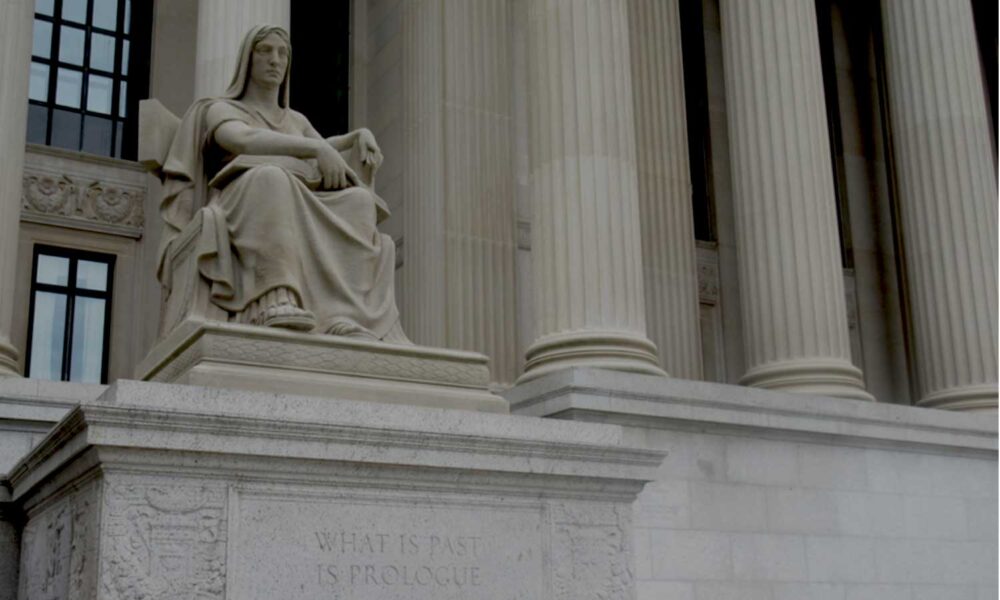There are reports President Biden will cancel US plans to build a new nuclear armed cruise missile. His predecessor started the program to fill a perceived gap created by the 2010 retirement of the Nuclear Tomahawk Land Attack Missile. This antiquated sea-based missile supposedly “contributed to deterrence and the assurance of allies, particularly in Asia,” even though it had been sitting in storage for almost 20 years.
Supporters of the new missile, like Admiral Richard, the commander of the US Strategic Command, are pressing Congress to continue to fund it. They believe it will deter Chinese leaders from starting a conventional war. That’s unlikely. They also claim it will reassure Japan. If what is past is prologue, the re-deployment of US nuclear weapons in East Asian waters is more likely to undermine the US-Japan alliance.
Chinese nuclear poker
Preventing the United States from using the threat of nuclear first use to influence decisions about the use of conventional military force is the raison d’etre of China’s nuclear weapons program. Chinese leaders believe that if US decision-makers know China can retaliate, they would never risk attacking China with nuclear weapons first.
The peasant revolutionary leaders who founded the People’s Republic in 1949, and started a nuclear weapons program in 1955, put it this way in 1964 in the only public statement the Chinese government ever made on the purpose of its nuclear arsenal.
“They have it and you don’t, and so they are very haughty. But once those who oppose them also have it, they would no longer be so haughty, their policy of nuclear blackmail and nuclear threat would no longer be so effective.”
Not long after the United States dropped atomic bombs on Hiroshima and Nagasaki, Chinese revolutionary leader Mao Zedong coined one of the most famous phases ever used to describe nuclear weapons when he told an American journalist,
“The atom bomb is a paper tiger which the US reactionaries use to scare people.”
It was not an act of bravado, or a failure to understand the destructive power of the weapon. It was an intuition, that gradually evolved into a policy, which presumes nuclear wars cannot be won, and therefore would never be fought, so long as one side could retaliate against the other. Any threat to start a nuclear war would be empty, a paper tiger.
Today, China’s military is preparing to “fight a conventional war under conditions of nuclear deterrence.” Chinese military leaders expect the United States to threaten to use tactical nuclear weapons in the event of war. The United States did it in Korea in 1950 and again during the Taiwan Strait Crisis in 1955. Chinese leaders won’t be surprised or intimidated if the United States government threatens to use them again.
The United States already has several types of low-yield nuclear weapons and the means to deliver a large number of them to targets anywhere in the world. Adding one more will not suddenly undermine seven decades of Chinese thinking about nuclear weapons.
Why spend nine billion dollars on another low-yield nuclear weapon that won’t deter China?
No one in Japan will feel assured
A handful of Japanese nuclear hawks support the New Sea-Launched Nuclear Cruise Missile (N-SLCM), sometimes referred to as the SLCM-N, but they don’t believe it is enough. They want a “nuclear sharing” arrangement that would give US nuclear weapons and the authority to use them to the Japanese military. Moreover, these highly secretive officials lobbied for the new missile behind closed doors because port visits from US naval vessels carrying nuclear weapons would violate Japanese law and offend public opinion.
In 1967, in response to public pressure, the Japanese government adopted “Three Non-Nuclear Principles” that prohibit the possession, manufacture, and introduction (into Japanese territory) of nuclear weapons. The principles are still supported by an overwhelming majority of the population. Three quarters of the country would like to solidify Japan’s non-nuclear status by joining the Treaty on the Prohibition of Nuclear Weapons (TPNW).
President George H.W. Bush unilaterally withdrew all US tactical nuclear weapons from East Asia in 1991. It was the final act in a draw down that began in 1972 when Japanese public pressure forced the United States to return Okinawa to Japan. The island was blanketed with US military bases the Japanese people did not want on Japan’s main islands. More than 1,200 US tactical nuclear weapons were deployed in Okinawa and when it was returned the bases could stay only if all US nuclear weapons were removed.
Reversing course and starting a new nuclear buildup in East Asia could strengthen Japanese opposition to US military bases in Japan. Supporters of the N-SLCM claim it would “not require or rely on host nation support.” But they know from past practice that’s not true. An investigation by the Japanese Foreign Ministry revealed that prior to 1991 Japanese and US officials tacitly agreed to allow US naval vessels carrying nuclear weapons to visit Japanese ports. Returning to that secret arrangement would be politically impossible now that the Japanese government made it public.
Why invite the political and diplomatic fallout of deploying a new nuclear weapon that won’t deter China or satisfy the security concerns of Japanese hawks or doves?
Defense Secretary Lloyd Austin told Congress the “marginal utility” of the N-SLCM “is far outweighed by the cost.” There is no question that is true in East Asia.

